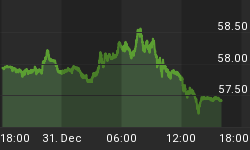Ben Bernanke has officially announced quantitative easing and the markets are reacting with rising prices amongst all asset classes. "QE2" is practically an economic tool to artificially raise asset prices to prevent deflationary forces. When prices in asset prices decline due to a lack of demand you have deflation. Quantitative easing essentially is a preventive approach for central banks to prevent deflationary forces. This techniques is used when a Central Bank can no longer lower interest rates due to it being to close to zero, so they just print money devaluing the currency and raising assetprices across the board.
Once started with QE it is very difficult for an economy to get off of it. As with many drugs, the high is great. but the hangover comes the next morning and the repercussions are unknown. This is unchartered territory where you have a major devaluation of the world's reserve currency. For every actionof the central banks there are reactions.
Now we are seeing a reaction with sovereign debt issues resurfacing in Europe as tensions grow over debt restructuring, bank bailouts and budget issues. Borrowing costs are rising because unlike the Fed, the European Central Bank did not purchase debt. The ECB will need to address these concerns of a decliningdollar and rising borrowing costs leading to a potential liquidity trap.
This may lead to a replay of the May "Flash" crash where there were reports of banks refusing to lend to each other. It is beginning of a global trade war where countries engage in competitive protectionism throughcurrency debasing. Interventions and market manipulations lead to market crashes.
A weak U.S. dollar is an additional tax on the American consumer as many are still faced with poor job opportunities and falling home values. A devalued U.S. currency puts pressure on emerging markets which need a strong dollarto make their products competitive.

Today gold and silver made a break out from the three week consolidation from early October. In early October, I mentioned precious metals would have a pullback. Over three weeks gold pulled back and this latest quantitative easing has pushed the price up to the upper resistance level again. This is not a point where I buy or add to positions as during the past two years gold has made 20-30% runs and given about half of those gains. In this market where interventions and manipulations are occurring chasing markets could be treacherous. Profit taking when the news and the consensus is bullish is the disciplined trader's approach. When everyone else is comfortable I get cautious.
















